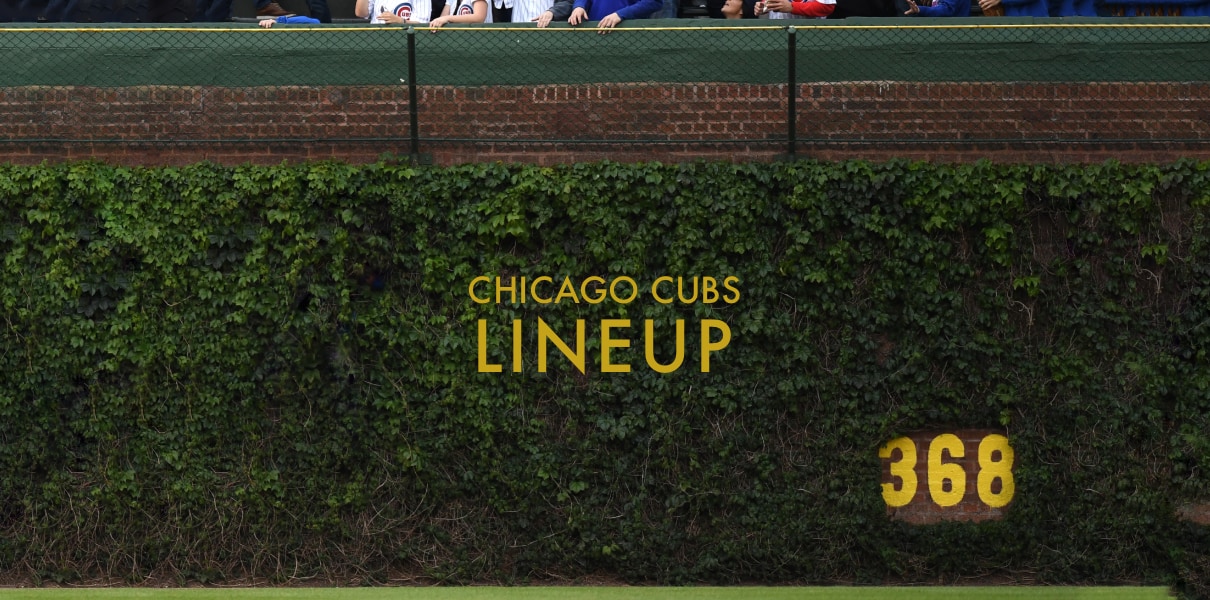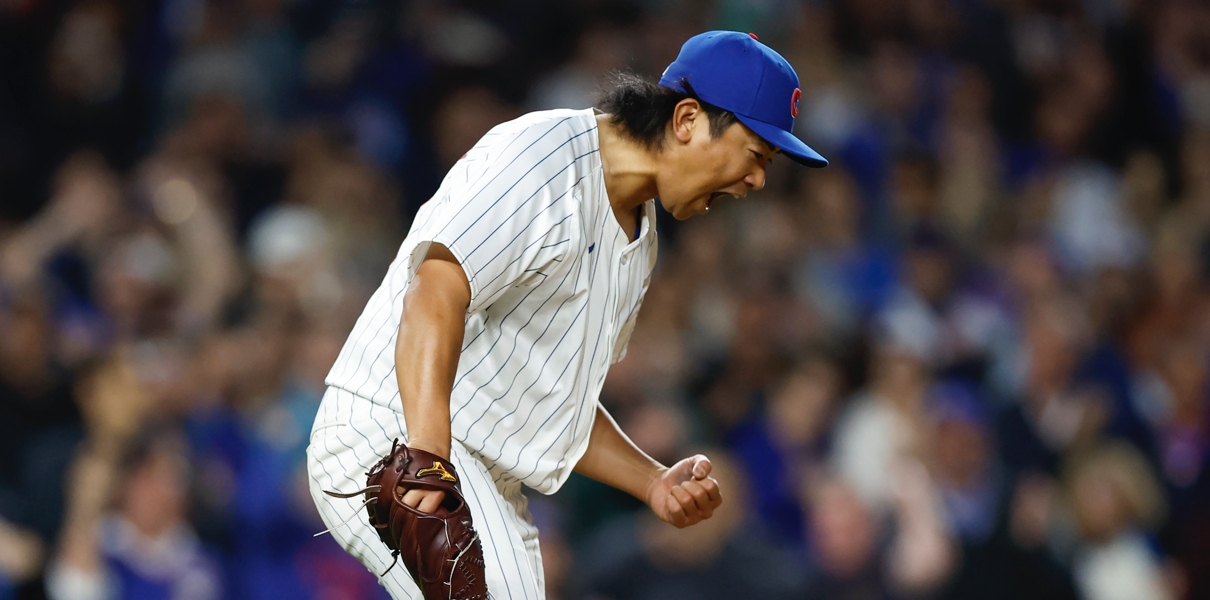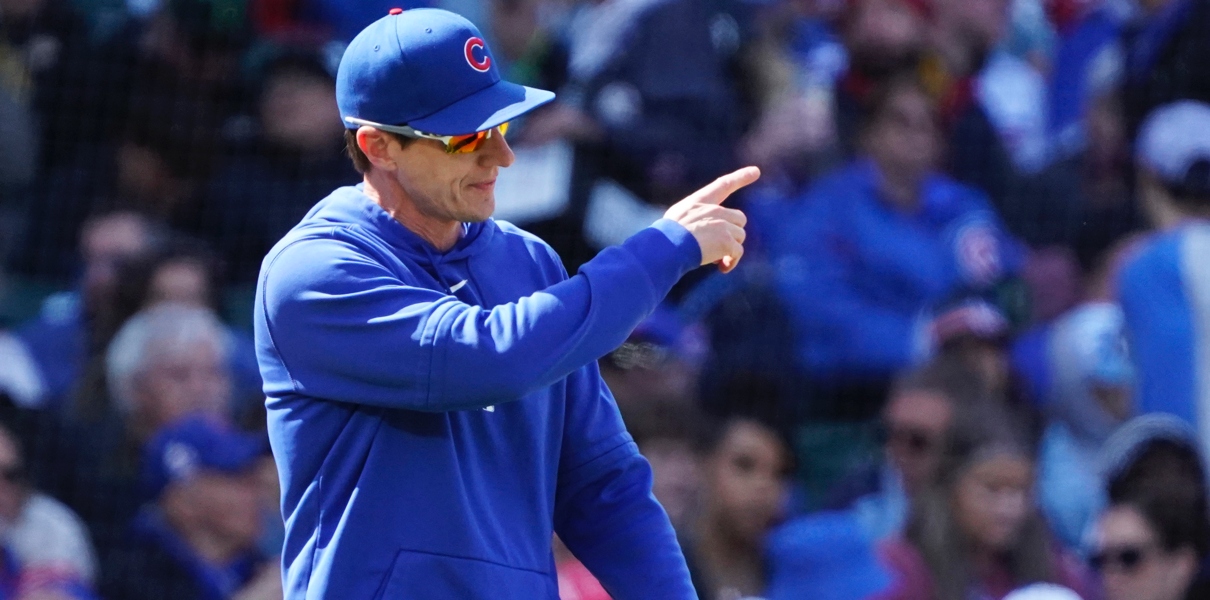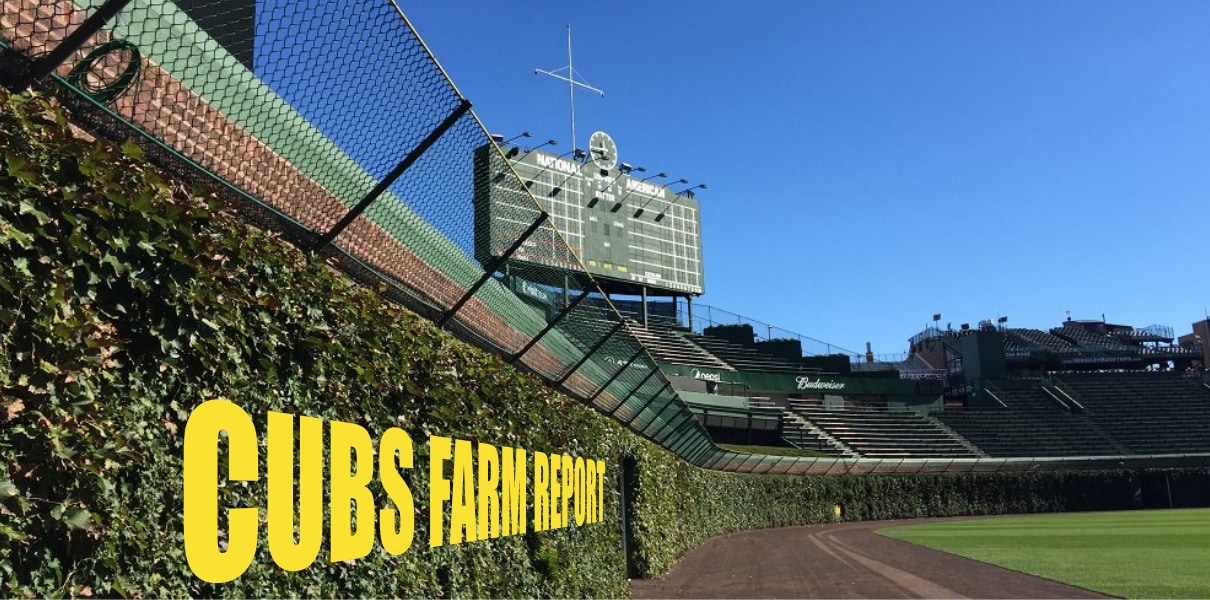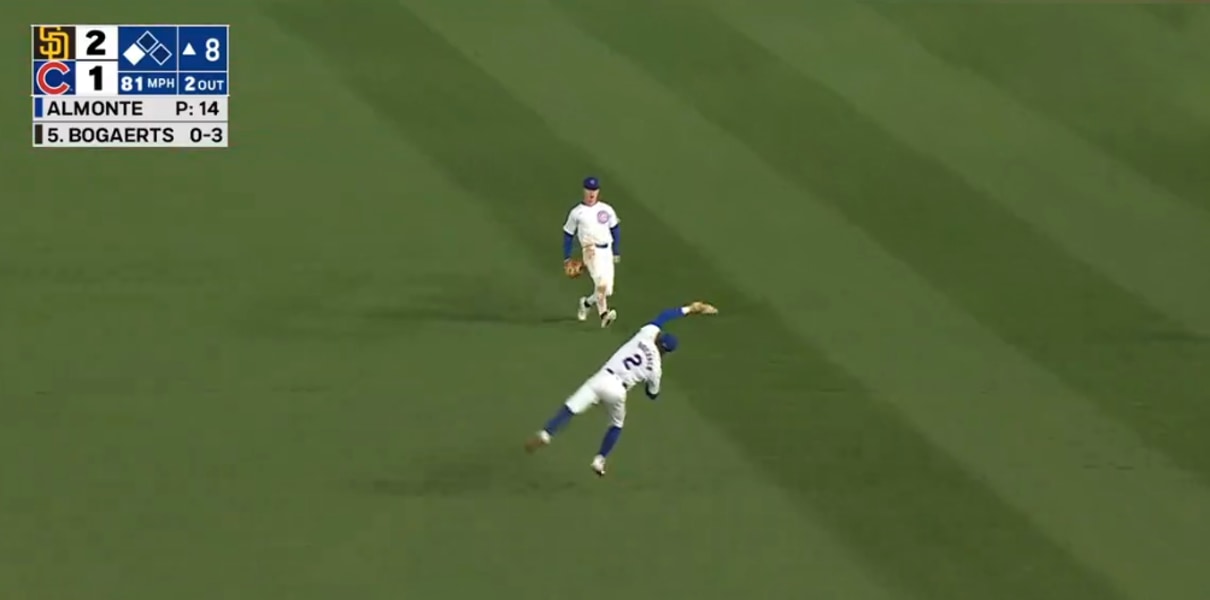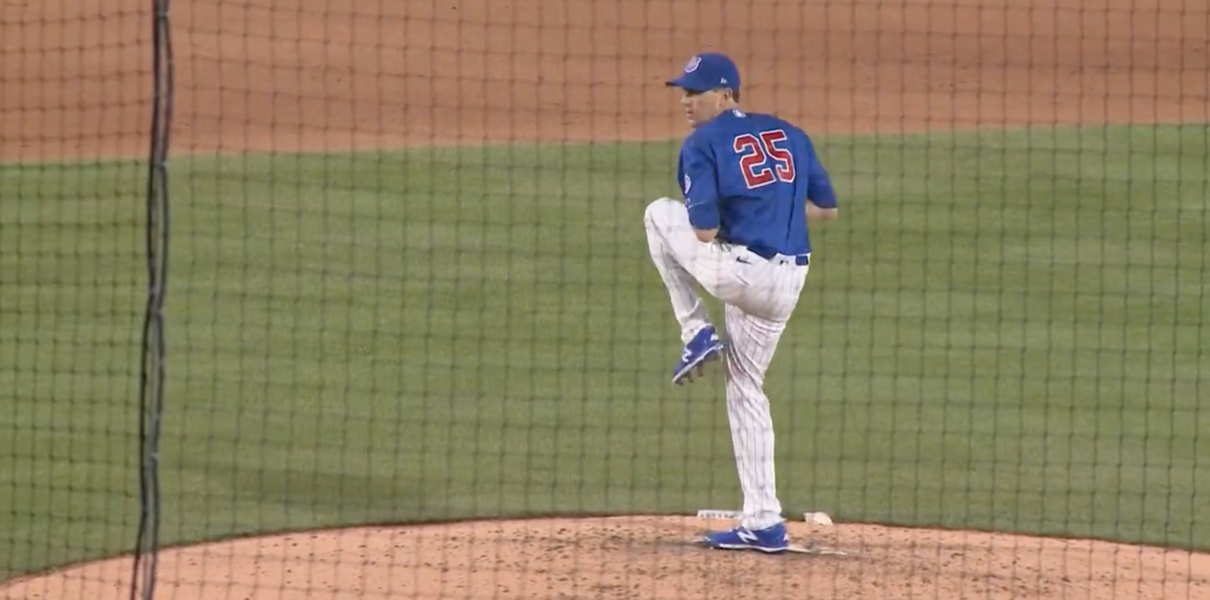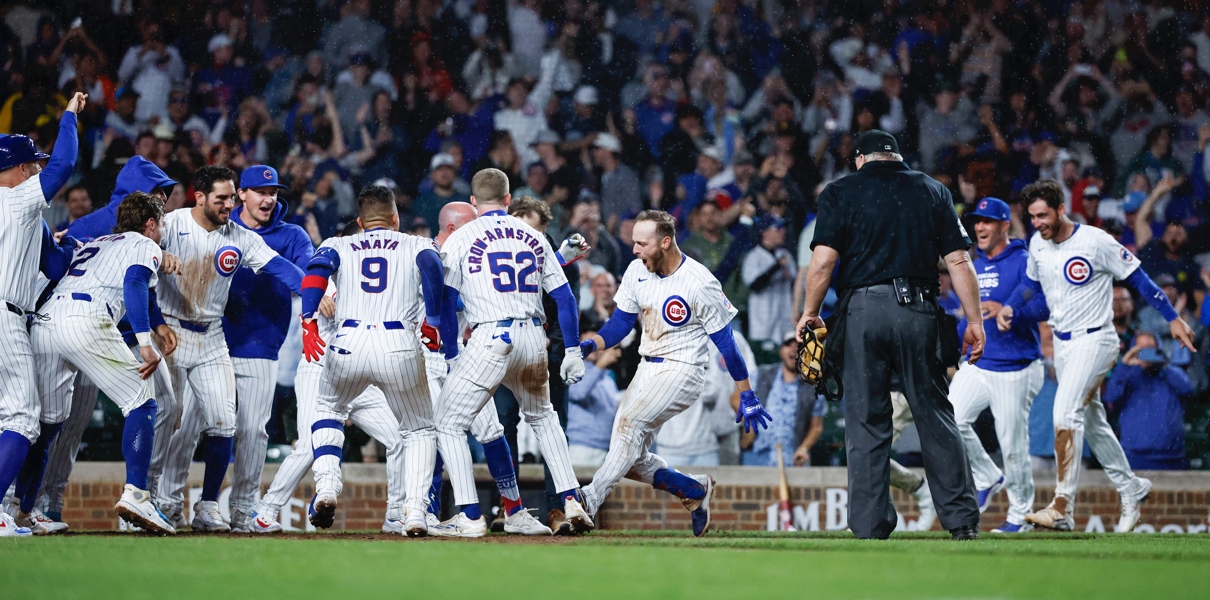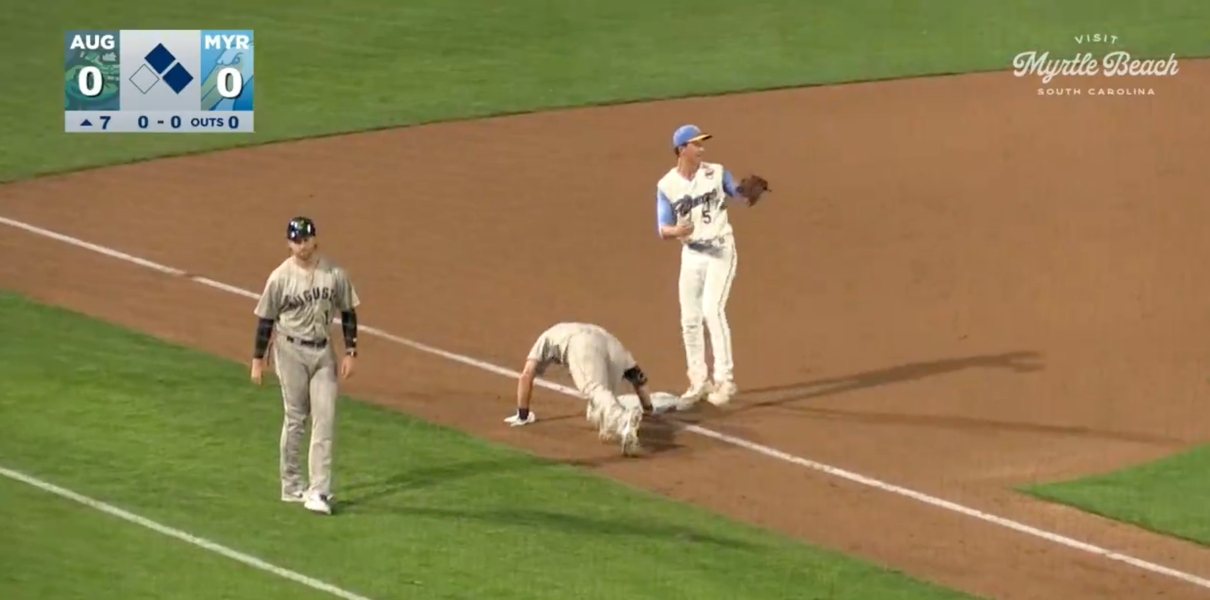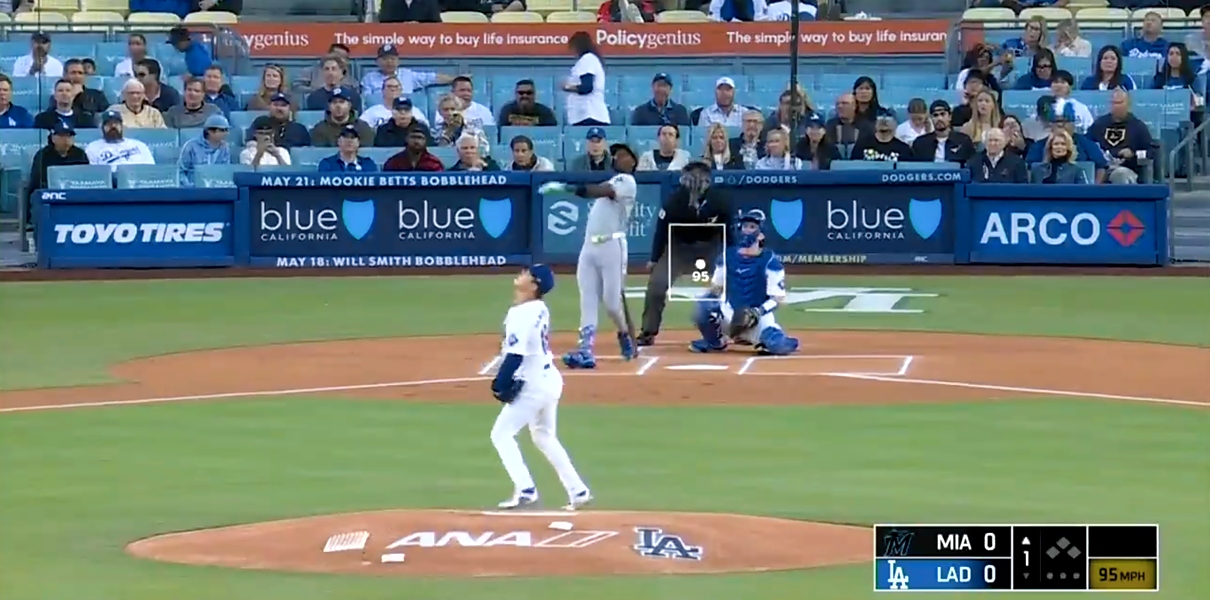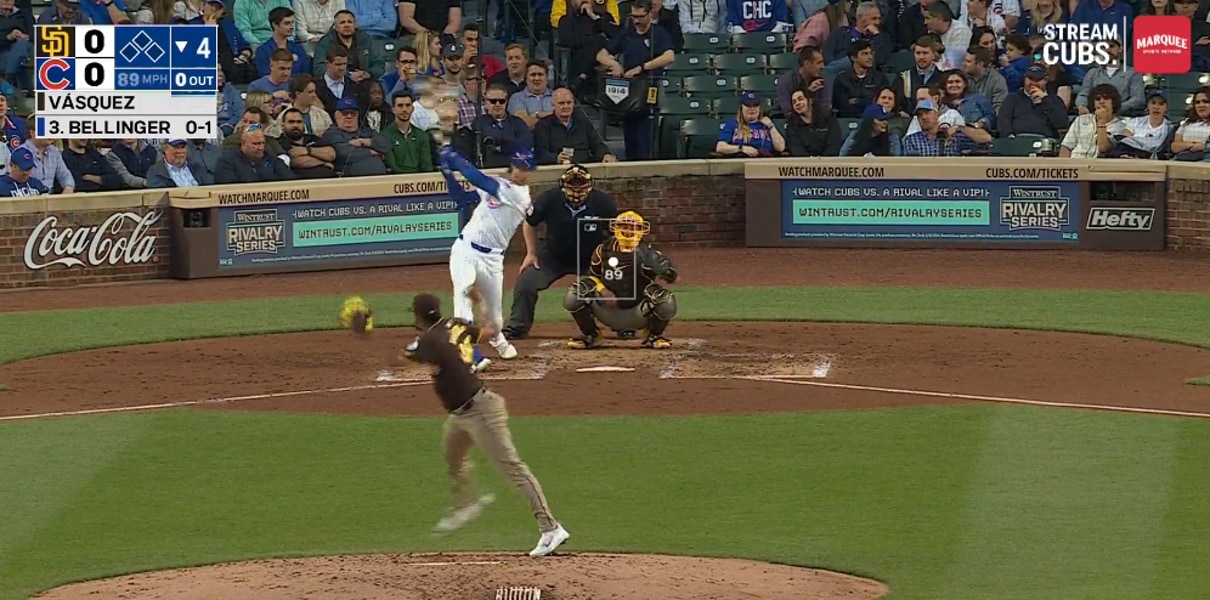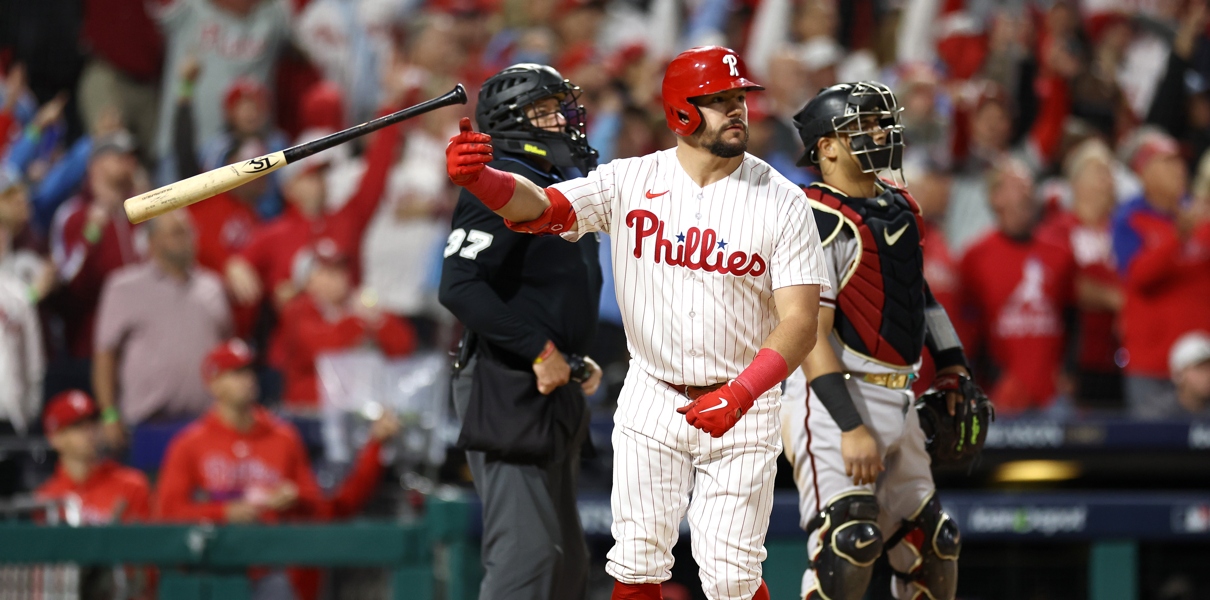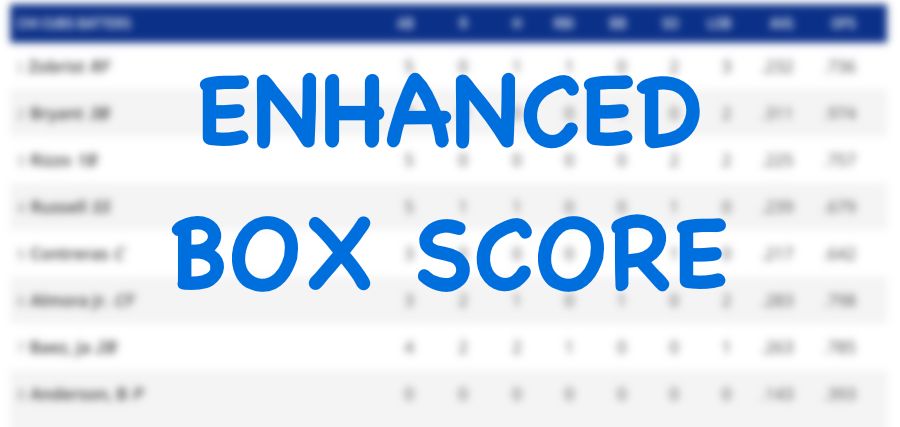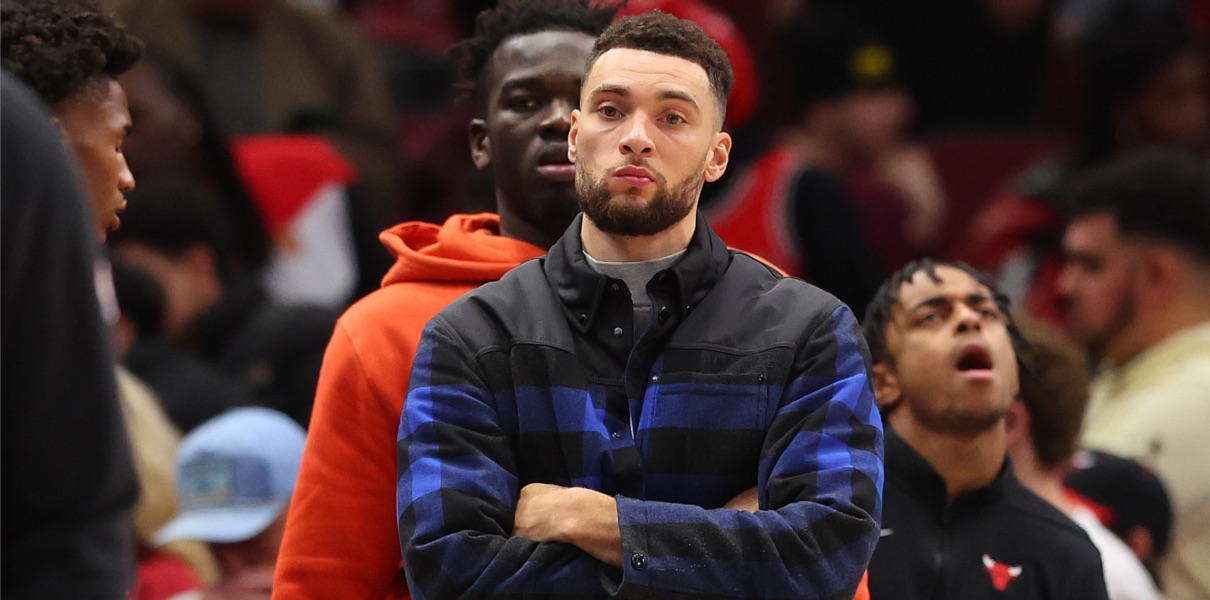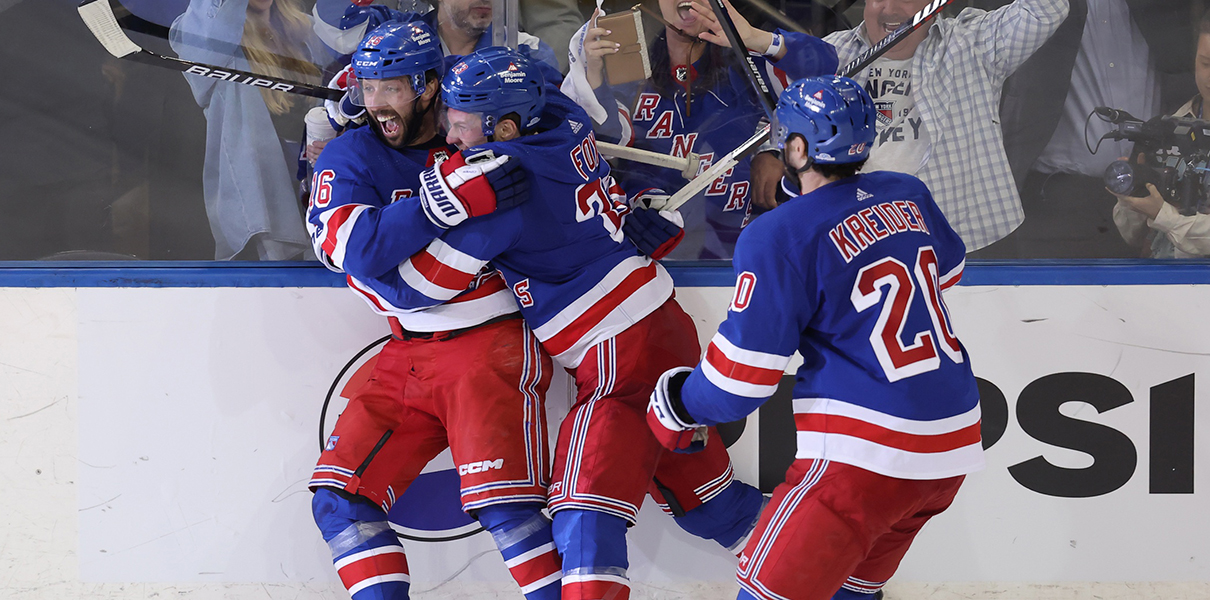Way back when he was still a lower-level pitching prospect in the Chicago Cubs’ system – and Bryan can attest to this! – I remarked that there was something special about Justin Steele’s four-seam fastball.
This was six years ago now, and at the time, I definitely didn’t have the same understanding of spin effects – efficiency, seam-shifted wake, etc. – that I do now, but even if I did, we wouldn’t have had the publicly-available data to analyze a High-A pitcher.
But I could tell just watching Steele’s outings with the Myrtle Beach Pelicans that there was something about the way the four-seamer was exploding out of his hand, the way it seemed to arrive at the catcher a tick earlier – and in a different spot – than my brain was expecting, and the way batters never seemed to be on it. That might be my favorite thing to see from a pitcher: a fastball where the batter just seems off. Like he can’t quite get a proper read on a pitch he feels he SHOULD be all over.
As Steele got older and developed more – after recovering from Tommy John surgery – we got to see more of the fastball, including his progress at the big league level. It’s not a coincidence that the barrel rate he allowed this past season was among the best in baseball. I’m convinced that he is just doing something really unique and funky with that fastball, which pairs exceptionally well with his wipeout slider. I mean, he was close to a two-pitch pitcher in 2022 as a starting pitcher, and still had so much success (he would very occasionally sprinkle in a two-seamer, a curveball, and a changeup). How? How is that possible?
Well, for one thing, it’s important to keep in mind that Steele – like a lot of the most successful pitchers – manipulates his pitches to throw them differently. So even if 90% of his pitches are a four-seamer or a slider, not all of his four-seamers or sliders are shaped in the same way.
For another thing … I’m telling you, that fastball is magic. Even as a 92-93 mph offering, it’s brutal for hitters. Turns out, when you DO dig into the data to try to quantify how unique it is – why batters react so poorly to it – you find out it’s because it is one of the most extreme fastballs in baseball.
Kudos to Eric Dadmun at The Pitcher List for digging in and discovering just how special Justin Steele’s four-seam fastball was in 2022:
Unlike the previous three guys in this article, I don’t think Justin Steele necessarily has the stuff to be drafted in the top 15 starters for 2023, however, I do still think he deserves a bit more attention than he’s been getting. His last seven starts were kind of crazy with a 0.98 ERA and 31% K-rate across 36.2 IPs. The FIP over that stretch (2.76) and K-BB% (22.4) hint at something really good, but not quite so dominant as the ERA would initially indicate. Steele is quietly among the toughest starters in the league to barrel up as his 3.9% barrel rate last year was second among starters with 100 IPs. His fastball was almost historically difficult to barrel.
Justin Steele nearly made history last year for the most fastballs thrown without allowing a homer. He didn’t get this record as Kyle Schwarber broke the streak in the very next game, but it’s another piece of evidence that there’s more than meets the eye with Steele. His fastball only tops out around 93-94 and his slider, while sporting good movement, isn’t otherworldly. Why is he so deceptive, then? Part of the answer is possibly seam-shifted wake. One way of analyzing how much Steele is benefitting from seam-shifted wake is by looking at the difference between spin-based movement and observed movement on his fastball.
Steele’s fastball movement deviates more than any other starter in the league and it’s only rivaled by Julio Urías. He talks in this article about how he can slightly adjust the movement of his fastball by varying where he throws it and how hard he throws it. This ‘consistently inconsistent’ fastball makes it nearly impossible for hitters to barrel him up because of the lower-than-expected arm-side run and deviation in movement versus what they’d typically expect based on the spin profile.
You can check out the article for some more graphical representations of the weirdness. Compared to how his fastball SHOULD move, based on the spin, Justin Steele’s four-seamer deviates more than any other fastball in baseball. If you can consistently pull that off, while moving your fastball around, changing its shape and location, then you’re going to have hitters who just cannot get the barrel on the ball with any regularity. It’s what we saw last year, and it’s a recipe for a guy whose ERA will always be better than his underlying statistics, because he just keeps generating crappy contact.
It’ll be no surprise to you that even when you simply evaluate Steele’s fastball based on its movement, it is a really weird outlier.
Its vertical drop is pretty steep for a four-seam fastball, about 25% more than league average. Normally, you’d want ride – less drop – on your four-seamer, but then again, maybe it’s an effective bit of weirdness to get sink on your four-seamer? Especially when it’s paired with the pitch’s truly bizarre horizontal movement, as it’s practically a cutter: the pitch moves arm-side 123% less than the average four-seamer (lol).
Somehow, Steele throws a fastball that SHOULD move like a typical four-seamer based on the predicted spin out of his hand … but then it does something magical and becomes a borderline cutter. Good luck, batter. Even if you are tracking the pitch correctly out of Steele’s hand, you will not barrel it if he executes. You just won’t (not unless the velocity falls way off or something). The pitch ain’t gonna move like your brain tells you it should move, and that extra couple inches is plenty to keep it off the barrel.
The questions going forward are all about that execution part. Can Steele keep this up? And can he get a little more out of a third and/or fourth pitch to generate more whiffs? Don’t get me wrong, generating a lot of crappy contact is great, but generating no contact at all is even better. You’d love to see him steal some more strikes looking, too, by keeping hitters off balance.
If Steele can bump that strikeout rate above 25% (it was 24.6% in 2022), and nudge down that walk rate below 9.0% (it was 9.8% in 2022), you’re talking about a guy with a 16+% spread in his K-BB, which would be in the top 30 among qualifying starting pitchers. Pair that with his extreme ability to stay off the barrel? I mean … stay tuned.




